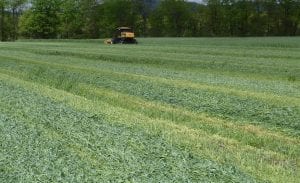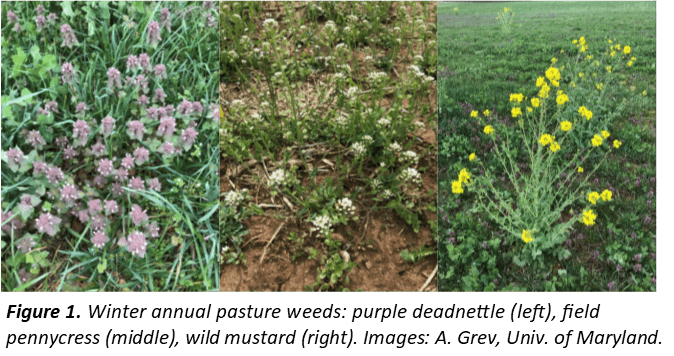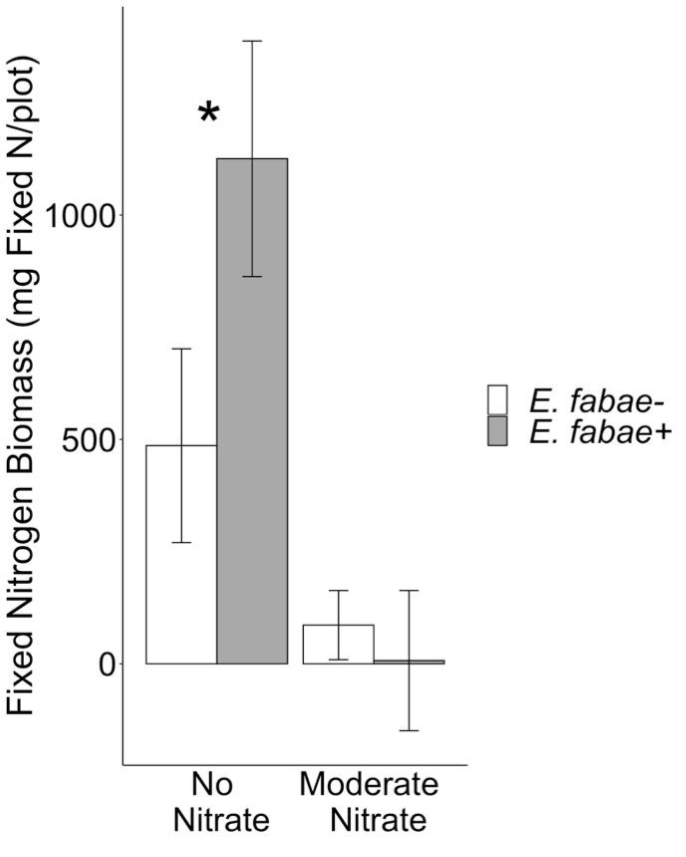Dr. Bob Kratochvil – Extension Agronomist
Mr. Louis Thorne – Agricultural Research Technician Supervisor
Dr. Jason Wight – Field Trials Coordinator
Ms. Jessica Whitaker – Student Assistant
Ms. Sonia Agu – Student Assistant
University of Maryland, College Park
 The majority of dairy farmers are constantly looking for sources of forage to meet their feed needs. One source that many of this region’s dairy farmers utilize is the fall planting of cereal grains that are green-chop harvested the following spring. Among the cereal species used for this purpose are rye, triticale, barley, and wheat. Per the Maryland Cover Crop Program guidelines, cereal grains planted as a cover crop prior to November 5 and suppressed via green-chop in the spring are eligible for the grant payment for participation in the Cover Crop Program. In addition, per the Nutrient Management Regulations, a fall application of dairy manure is allowed to a field planted to a cereal cover crop.
The majority of dairy farmers are constantly looking for sources of forage to meet their feed needs. One source that many of this region’s dairy farmers utilize is the fall planting of cereal grains that are green-chop harvested the following spring. Among the cereal species used for this purpose are rye, triticale, barley, and wheat. Per the Maryland Cover Crop Program guidelines, cereal grains planted as a cover crop prior to November 5 and suppressed via green-chop in the spring are eligible for the grant payment for participation in the Cover Crop Program. In addition, per the Nutrient Management Regulations, a fall application of dairy manure is allowed to a field planted to a cereal cover crop.
Planting a cereal cover crop for green chop harvest fits well into the crop rotation used by many dairy farmers. The scenario that many follow is to plant the cereal cover crop following harvest of corn silage. Prior to planting the cover crop, an application of manure is made to the field. The subsequent planting of the cover crop provides incorporation of the manure into the soil. The fall and spring growth of the cover crop is supplied nutrients from the manure. At the same time, the cover crop provides protection to the soil from loss of nutrients via leaching and/or erosion. The objective of this study was to evaluate the performance of 18 triticale varieties submitted by participating companies along with select varieties of four cereal species (3 triticale, 3 rye, 1 barley and 1 wheat) for cover crop performance and forage production and quality.
The location for this study was the Central Maryland Research and Education Center – Clarksville Facility. Four replications for each entry were planted at the field site using a randomized complete block experimental design. Planting date was October 3, 2017. The 3.5’ X 18’ plots were planted with a small plot planter with 6-inch spacing between each of the 7-rows. Each entry’s germination percentage was used to calculate the seeding rate needed to establish 1.5 M seedlings. Good stands were observed for all entries by late fall.
In order to compare forage quality among the entries that headed over a period of ten days, the timing of the biomass harvest was when each entry reached the late boot stage of development. Each harvest sample was collected by cutting the plants just above ground level from two center rows of each plot from an area 2.5 feet in length. Each sample was placed into a cloth bag and dried using a forced air dryer set at 60o C where they remained until sample water content was zero. Biomass yield is reported as pounds of dry matter production per acre (Table 1). Each of the dried samples was ground through a 20-mesh screen using a large plant grinder. All samples were sent to the Cumberland Valley Analytical Laboratory (Waynesboro, PA; http://www.foragelab.com/) for standard forage quality analysis. Data for all agronomic and forage quality measurements are found in Table 1. Table 2 identifies the Company/Source and address/phone number for the participants who supplied the cereal varieties tested in this study.
Producers are always interested in biomass production. Notable entries for biomass production were BCT15513 (Seed-link, Inc.) and Mercer EXP508 (Eddie Mercer Agri-Services, Inc.). Cover crop performance is measured by amount of biomass produced and the concentration of nitrogen in the biomass. These two factors were used to estimate nitrogen uptake (Table 1). The top two entries for cover crop performance were Cover Crop Rye and the triticale variety, Mercer EXP508 (Table 1). The only entry to have nitrogen uptake that was significantly less than the mean for the study was the triticale variety, TriCal 813 (37 lb N/a). This is due to its production of only 2379 lb/a biomass and a low crude protein content (9.8%).
A number of forage quality characteristics for these cereals was measured (Table 1). The descriptions of the various quality characteristic are described in the footnotes at the bottom of Table 1. The characteristic that perhaps best captures the overall forage quality performance is Relative Feed Value (RFV). A RFV of 100 is defined as the forage value that full bloom alfalfa would have. The barley variety, Nomini, and the triticale variety, TriCal Exp 917 (TriCal Superior Forage) had the best RFV (107).
Though, none of these greenchop cereal forages are considered to be adequate as a stand-alone feed for a dairy operation, they can supply a source of forage used in a total mixed ration (TMR) at the time of year when feed supply may be running short. When this forage benefit is added to the environmental benefit that is gained, planting winter cereal cover crops on a dairy farm can be a win-win decision.
Table 1. Performance of 26 cereal varieties tested for biomass production and forage quality at the Central Maryland Research and Education Center Clarksville Farm during 2017-2018.
| Variety |
Company/Source |
Species |
Dry Matter Yield
(lb/a
0% Moisture) |
Height
(in) |
Head
Date
(Days
after April 30) |
Nitrogen
Removal
(lb/a)1 |
Crude Protein
%2 |
Rumen
Degradable
Protein3
% |
Acid
Detergent Fiber
%4 |
Neutral Detergent Fiber
%5 |
Total Digestible Nutrients
%6 |
Relative Feed
Value7 |
| Arcia |
Eddie Mercer Agri-Services Inc. |
Triticale |
4145 |
49 |
7* |
69 |
10.6 |
7.1 |
33.2* |
57.9 |
63.0* |
102 |
| BCT15509 |
Seed-link Inc. |
Triticale |
4068 |
49 |
11 |
74* |
11.1 |
7.4 |
34.4 |
57.8 |
62.1 |
100 |
| BCT15513 |
Seed-link Inc. |
Triticale |
5603* |
57* |
12 |
93* |
10.2 |
7.0 |
37.1 |
61.7 |
59.8 |
91 |
| BCT17001 |
Seed-link Inc. |
Triticale |
4989* |
54 |
9 |
87* |
10.8 |
7.5 |
36.4 |
59.3 |
61.5 |
96 |
| BCT17002 |
Seed-link Inc. |
Triticale |
3531 |
56 |
10 |
63 |
11.1 |
7.5 |
34.4 |
58.8 |
61.2 |
99 |
| BCT17003 |
Seed-link Inc. |
Triticale |
4337 |
54 |
14 |
78* |
10.9 |
7.8 |
39.9 |
64.8 |
59.1 |
83 |
| Brasseto |
FP Genetics (Canada) |
Rye |
3492 |
55 |
6* |
63 |
11.3 |
7.8 |
36.6 |
60.5 |
62.0 |
93 |
| Cover Crop Rye |
Variety Not Stated |
Rye |
4874* |
61* |
5* |
97* |
12.2* |
8.4* |
34.5 |
58.0 |
62.1 |
100 |
| Danko |
Polish Plant Breeding Institute |
Rye |
3608 |
63* |
6* |
68 |
11.9* |
8.1* |
33.9 |
57.9 |
62.8* |
100 |
| HiOctane |
Seedway |
Triticale |
4030 |
54 |
8 |
70 |
10.6 |
7.1 |
36.0 |
60.9 |
60.4 |
93 |
| HyOctane |
Seed-link Inc. |
Triticale |
4414 |
50 |
10 |
78* |
10.9 |
7.4 |
35.3 |
59.4 |
61.7 |
96 |
| Louisa |
University of Maryland |
Wheat |
3838 |
48 |
11 |
63 |
10.2 |
6.7 |
32.9* |
55.9* |
63.0* |
105* |
| Mercer EXP508 |
Eddie Mercer Agri-Services Inc. |
Triticale |
5411* |
54 |
8 |
97* |
11.1 |
7.5 |
35.5 |
58.8 |
61.9 |
97 |
| NCT 10318 |
North Carolina State Univ. |
Triticale |
4452* |
52 |
6* |
77* |
10.7 |
7.1 |
33.5* |
56.3* |
63.4* |
104* |
| NCT 10888 |
North Carolina State Univ. |
Triticale |
4951* |
50 |
7* |
92* |
11.7* |
7.9 |
34.2 |
56.5* |
63.3* |
103* |
| NCT 15928 |
North Carolina State Univ. |
Triticale |
4222 |
55 |
11 |
74* |
11.0 |
7.4 |
33.8 |
55.7* |
63.4* |
105* |
| Nomini |
Virginia Tech |
Barley |
2840 |
49 |
7* |
56 |
12.5* |
8.7* |
32.2* |
55.5* |
63.6* |
107* |
| Traction |
Seed-link Inc. |
Triticale |
4337 |
46 |
9 |
72 |
10.4 |
6.9 |
35.4 |
59.8 |
62.0 |
95 |
| Trical 141 |
TriCal Superior Forage |
Triticale |
3761 |
56 |
9 |
63 |
10.6 |
7.1 |
40.4 |
65.4 |
58.3 |
82 |
| Trical 813 |
TriCal Superior Forage |
Triticale |
2379 |
56 |
12 |
37 |
9.8 |
6.7 |
38.5 |
61.4 |
60.2 |
90 |
| Trical Exp 08TF01 |
TriCal Superior Forage |
Triticale |
4452* |
56 |
12 |
72 |
10.0 |
6.8 |
39.7 |
65.4 |
58.3 |
82 |
| Trical Exp 30113 |
TriCal Superior Forage |
Triticale |
4414 |
59* |
9 |
74* |
10.5 |
7.0 |
36.9 |
60.4 |
61.0 |
93 |
| Trical Exp 917 |
TriCal Superior Forage |
Triticale |
4452* |
47 |
9 |
74* |
10.3 |
6.8 |
32.6* |
55.5* |
63.8* |
107* |
| Trical Flex 719 |
TriCal Superior Forage |
Triticale |
4721* |
49 |
11 |
75* |
9.9 |
7.0 |
40.7 |
64.5 |
58.2 |
83 |
| Trical Gainer 154 |
TriCal Superior Forage |
Triticale |
3953 |
49 |
8 |
67 |
10.5 |
7.2 |
34.0 |
57.2* |
63.0* |
102 |
| Trical Surge |
TriCal Superior Forage |
Triticale |
4337 |
53 |
10 |
72 |
10.4 |
7.0 |
38.0 |
62.5 |
59.7 |
89 |
| Mean |
4216 |
53 |
9 |
73 |
10.8 |
7.3 |
35.8 |
59.5 |
61.5 |
96 |
| Probability > F |
0.233 |
0.04 |
0.0012 |
0.51 |
0.05 |
0.28 |
<0.0001 |
<0.0001 |
<0.0001 |
<0.0001 |
| LSD(0.20) |
1164 |
6.1 |
2.6 |
24 |
0.95 |
0.72 |
1.48 |
1.82 |
1.07 |
4.3 |
* Indicates the entry was statistically comparable to the best performing variety (in bold) for the measured variable.
1Nitrogen uptake (lb/acre) for each entry was estimated by multiplying the lb DM/a X % nitrogen contained in the DM. The percent nitrogen for each entry was calculated by dividing crude protein by the conversion factor 6.25, the average nitrogen content for protein.
2Crude Protein %: represents total nitrogen content of the forage; higher protein is usually associated with better feed quality.
3Rumen Degradable Protein: portion of crude protein that microbes can either digest or degrade to ammonia and amino acids in the rumen.
4Acid Detergent Fiber: represents the least digestible fiber portion of forage; the lower the ADF value the greater the digestibility; an ADF <35% is considered good quality.
5Neutral Detergent Fiber: insoluble fraction of forage used to estimate the total fiber constituents of a feedstock; NDF has a negative correlation with dry matter intake and is used to estimate dry matter consumption; as NDF decreases animals will consume more forage; for grass forages NDF <50% is considered good quality and >60% is considered low quality.
6Total Digestible Nutrients: measure of the energy value of the forage.
7Relative Feed Value: indicates how well an animal will eat and digest a forage if it is fed as the only source of energy; full bloom alfalfa has an RFV of 100.
8Elite triticale breeding lines obtained from North Carolina State University for local testing by University of Maryland. These are not available for purchase.
Table 2. The company/source for the 26 cereal varieties that were tested in the 2017-2018 Cereal Forage Quality study conducted at Central Maryland Research and Education Center-Clarksville Farm.
| Company/Source |
Address |
Contact |
Phone Number |
Entries |
| Eddie Mercer Agri-Services Inc. |
6900 Linganore Road
Frederick, MD 21701 |
Tom Mullineaux |
410 409-7538 |
Arcia; Mercer EXP508; Nomini |
| Seed-link, Inc. |
208 S. David St.
Lindsay, Ontario
K9V 5Z4
Canada |
Peter E. Bonis |
705-324-0544 |
BCT15509; BCT15513; BCT17001; BCT17002; BCT17003; HyOctane; Traction |
| Seedway |
5901 Veracruz Rd.
Emmaus, PA 18099 |
Jerry Davis |
717-363-0103 |
HiOctane |
| TriCal Superior Forage |
2355 Rice Pike
Union, KY 41091 |
Bill Smith |
859-802-2288 |
TriCal 141; TriCal 813; TriCal Exp 08TF01; TriCal Exp 30113; TriCal Exp 917; TriCal Flex 719; TriCal Gainer 154; TriCal Surge |
| FP Genetics |
426 McDonald Street
Regina, SK
S4N 6E1
Canada |
|
877-791-1045 |
Brasseto |
| Polish Plant Breeding Institute |
Danko Hodowla Roślin Sp. z o.o.
Choryń 27
64-000 Kościan
Poland |
|
+48 65 513 48 13 |
Danko |
| University of Maryland |
4291 FIELDHOUSE DR
2121 Plant Sciences Building
College Park, MD 20742 |
Jason Wight |
301 405 4558 |
Louisa |




 The majority of dairy farmers are constantly looking for sources of forage to meet their feed needs. One source that many of this region’s dairy farmers utilize is the fall planting of cereal grains that are green-chop harvested the following spring. Among the cereal species used for this purpose are rye, triticale, barley, and wheat. Per the Maryland Cover Crop Program guidelines, cereal grains planted as a cover crop prior to November 5 and suppressed via green-chop in the spring are eligible for the grant payment for participation in the Cover Crop Program. In addition, per the Nutrient Management Regulations, a fall application of dairy manure is allowed to a field planted to a cereal cover crop.
The majority of dairy farmers are constantly looking for sources of forage to meet their feed needs. One source that many of this region’s dairy farmers utilize is the fall planting of cereal grains that are green-chop harvested the following spring. Among the cereal species used for this purpose are rye, triticale, barley, and wheat. Per the Maryland Cover Crop Program guidelines, cereal grains planted as a cover crop prior to November 5 and suppressed via green-chop in the spring are eligible for the grant payment for participation in the Cover Crop Program. In addition, per the Nutrient Management Regulations, a fall application of dairy manure is allowed to a field planted to a cereal cover crop.